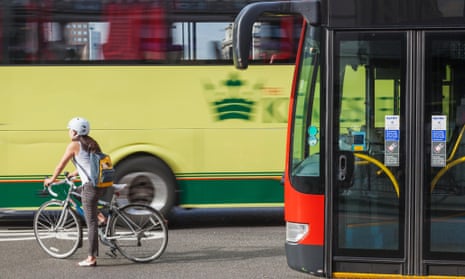The idea of road safety in this country is highly reactive; making improvements, if we’re lucky, after people die. Taking account of near misses should be part of a more proactive stance and can help us meet policy aspirations to increase cycling. Growing evidence suggests near misses have a big impact on cycling, more than (rarer) actual injuries. They put people off and contribute to the substantial rates of churn.
The Near Miss project (supported by research hub Creative Exchange and bike light manufacturer Blaze) is the first to calculate a national rate for near misses. While a commuting cyclist in the UK might expect a cycling injury (most likely slight and self-treated) once every 20 years, they might be harassed by another road user every month, with a ‘very scary’ incident every week.
This rate is shocking and I almost feel guilty for mentioning it. Am I, as some people worry, just going to put people off cycling? However, as with other hidden harassment, I feel keeping quiet doesn’t help. This happens to people every day on our streets, and needs to be discussed – and stopped.
Not everyone is equally affected. Women reported higher rates: for example, 50% more close passes per mile than men. This contrasts with Ian Walker’s well-known research in which he experienced fewer objectively measured close passes when wearing a long blond wig. The Near Miss research, in which hundreds of women participated, suggests either Walker’s finding is not transferable to female cyclists, and/or that the definition of a ‘close pass’ varies for different types of cyclist.
Within a regression model of near miss rates, gender became statistically non-significant and speed a strong predictor. So the underlying relationship seems to be that slower cyclists have higher incident rates for a given journey length. Female project participants reported slower cycling than males, leading to their higher near miss rates.
There could be different reasons for this. Perhaps people riding more slowly are less ‘hardened’ to the UK’s cycling conditions, and more sensitive to near misses. Perhaps faster cyclists simply experience fewer overtakes for a given distance, lowering their risk. Or perhaps the higher speeds are associated with red light jumping, conferring some protection through separation from motor traffic behind. We don’t know why.
But whatever the reason, it’s deeply concerning that people completing a journey at an average speed of below 8mph experience three times as many near misses as people completing a similar length journey at an average speed of over 12mph.
If every near miss makes it that bit more likely that someone stops cycling, this helps explain the failure to ‘de-Lycrafy’ UK cycling. Why ride in a leisurely manner, if you then experience many more unpleasant incidents? One participant wrote: “You have to be fast and opinionated and take up the whole lane to avoid being pushed out.”
Another troubling finding was the absence of any measurable ‘safety in numbers’ effect. To the contrary, there was a (weak) positive relationship between near miss rates and cyclist volumes, with higher rates in the morning peak.
It’s important this research doesn’t lead to hand-wringing. Near misses have causes, and often perpetrators. We can’t create a perfect transport system: some delays and annoyances will always exist for cyclists, pedestrians and drivers. But there are clear patterns associated with the most frightening near misses, suggesting they are systematic and predictable.
The scariest incidents involve motor vehicles, particularly large motor vehicles. They include close passes, incidents where a driver pulls in or out across a cyclist’s path, or nearly left hooks them, sometimes deliberate abuse.
This shouldn’t just be part of the normal cut and thrust of UK cycling.
Participants said most incidents could have been prevented by different driver behaviour and/or changing the road environment – with the most cited infrastructural change being increased separation of cyclists and motor vehicles. By contrast, most incidents were not judged preventable by the cyclist themselves, adding to a pervasive sense of powerlessness.
A project report and event in September will discuss near miss prevention strategies further so I will just mention a couple of issues here. For me, the research highlights just why cycling in the UK is often so scary: it’s not just the presence of motor vehicles but the stream of specific scary incidents accompanying them. This is another reason to step up provision of high quality segregated infrastructure on fast or busy roads, and reduce motor vehicle speeds and volumes where cyclists must share with motors.
Close passes are so frequent, as confirmed by ‘objective’ research on passing distances, that I feel something specific needs to be done.
Technically often ‘careless’ or even ‘dangerous’ driving – both criminal offences – close passes are part of British road culture, like drink-driving a couple of generations ago. As with drink-driving, we need an ongoing, concerted effort to make it socially unacceptable. This should go alongside remedying the many examples of road infrastructure putting cyclists at increased risk of close passes.
